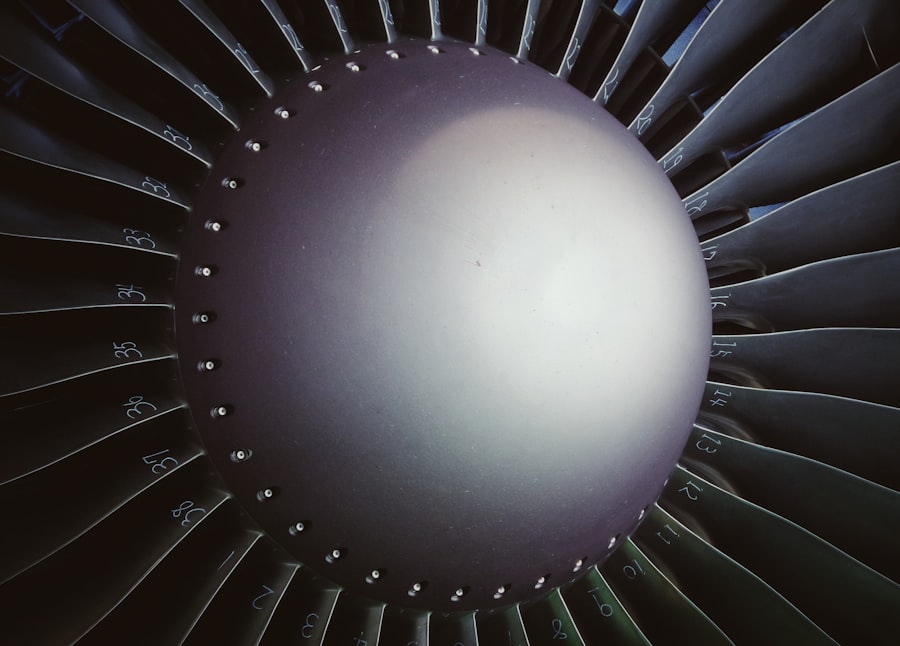The aerospace industry is a multifaceted sector that encompasses the design, development, production, and maintenance of aircraft, spacecraft, and related systems and equipment. This industry plays a pivotal role in global transportation, defense, and exploration, contributing significantly to economic growth and technological advancement. The aerospace sector is not only vital for commercial aviation but also for military applications and space exploration, making it a cornerstone of modern civilization.
The industry’s complexity is underscored by its integration of various disciplines, including engineering, manufacturing, and logistics, all of which work in concert to deliver safe and efficient air and space travel. Historically, the aerospace industry has been characterized by rapid innovation and evolution. From the Wright brothers’ first powered flight in 1903 to the advent of supersonic jets and reusable rockets, the journey has been marked by milestones that have transformed how humanity interacts with the skies and beyond.
Today, the industry is at a crossroads, facing both unprecedented challenges and remarkable opportunities. As global demand for air travel continues to rise, the aerospace sector must adapt to changing market dynamics while also addressing pressing issues such as sustainability and technological disruption.
Key Takeaways
- The aerospace industry encompasses the design, development, and production of aircraft, spacecraft, and related systems and equipment.
- Current challenges in the aerospace industry include supply chain disruptions, increasing competition, and rising production costs.
- Opportunities for growth in the aerospace industry include the development of urban air mobility, increased demand for satellite services, and the expansion of commercial space travel.
- Technological advancements and innovations in aerospace, such as 3D printing, artificial intelligence, and advanced materials, are driving efficiency and performance improvements.
- Environmental and sustainability initiatives in aerospace focus on reducing carbon emissions, developing alternative fuels, and improving aircraft fuel efficiency.
Current Challenges in the Aerospace Industry
The aerospace industry is currently grappling with a myriad of challenges that threaten its stability and growth. One of the most pressing issues is the impact of geopolitical tensions on supply chains. Trade disputes, tariffs, and sanctions can disrupt the flow of critical components needed for aircraft manufacturing.
For instance, the ongoing tensions between the United States and China have led to uncertainties in sourcing materials and parts, which can delay production schedules and increase costs. Additionally, the COVID-19 pandemic has exacerbated these challenges by causing significant disruptions in global supply chains, leading to shortages of essential components and labor. Another significant challenge facing the aerospace industry is the increasing pressure to reduce carbon emissions.
As climate change becomes an ever-pressing concern, governments and consumers alike are demanding more sustainable practices from manufacturers. The aviation sector is responsible for approximately 2-3% of global carbon emissions, prompting calls for more environmentally friendly technologies. The challenge lies in balancing the need for economic growth with environmental responsibility.
Companies are investing heavily in research and development to create more fuel-efficient engines and explore alternative fuels, but these innovations require time and substantial financial resources.
Opportunities for Growth in the Aerospace Industry

Despite the challenges, the aerospace industry is poised for significant growth in several areas. One of the most promising opportunities lies in the expansion of urban air mobility (UAM). As cities become increasingly congested, there is a growing interest in developing air taxis and other forms of aerial transportation that can alleviate ground traffic.
Companies like Joby Aviation and Volocopter are at the forefront of this movement, working on electric vertical takeoff and landing (eVTOL) aircraft that could revolutionize urban transportation. The potential market for UAM is vast, with estimates suggesting it could be worth hundreds of billions of dollars within the next decade. Another area ripe for growth is space exploration and satellite technology.
The commercialization of space has opened up new avenues for investment and innovation. Private companies such as SpaceX and Blue Origin are leading the charge in reducing launch costs and increasing access to space. The demand for satellite services—ranging from telecommunications to Earth observation—continues to grow as businesses and governments seek to leverage data for decision-making.
The rise of small satellites, or CubeSats, has further democratized access to space, allowing smaller entities to participate in this lucrative market.
Technological Advancements and Innovations in Aerospace
| Year | Technological Advancements | Innovations |
|---|---|---|
| 1969 | Moon landing | Apollo 11 mission |
| 1981 | Space Shuttle program | Reusable spacecraft |
| 2004 | SpaceShipOne | First privately funded human spaceflight |
| 2015 | Falcon 9 rocket landing | Reusable rocket technology |
Technological advancements are at the heart of the aerospace industry’s evolution. One of the most significant innovations in recent years has been the development of advanced materials that enhance aircraft performance while reducing weight. Composite materials, such as carbon fiber reinforced polymers, are increasingly being used in aircraft construction due to their strength-to-weight ratio.
The Boeing 787 Dreamliner is a prime example of this trend; it utilizes composite materials extensively, resulting in improved fuel efficiency and reduced maintenance costs. Moreover, digital technologies are transforming how aerospace companies operate. The integration of artificial intelligence (AI) and machine learning into design processes allows for more efficient simulations and optimizations.
Predictive maintenance powered by AI can help airlines reduce downtime by anticipating equipment failures before they occur. Additionally, advancements in additive manufacturing—commonly known as 3D printing—are enabling manufacturers to produce complex components with greater precision and less waste. This technology not only streamlines production but also allows for rapid prototyping, which can significantly shorten development cycles.
Environmental and Sustainability Initiatives in Aerospace
As environmental concerns take center stage globally, the aerospace industry is increasingly focusing on sustainability initiatives. Major manufacturers are committing to ambitious targets aimed at reducing their carbon footprints. For instance, Airbus has set a goal to achieve net-zero emissions by 2050, which involves investing in new technologies such as hydrogen-powered aircraft.
The company is actively exploring hydrogen as a potential fuel source due to its zero-emission capabilities when combusted. In addition to alternative fuels, many companies are also looking at operational efficiencies to minimize environmental impact. Airlines are adopting more efficient flight paths and investing in modern fleets that consume less fuel per passenger mile.
Furthermore, initiatives like carbon offset programs allow airlines to compensate for their emissions by investing in renewable energy projects or reforestation efforts. These measures not only help mitigate environmental impact but also resonate with consumers who are increasingly making travel choices based on sustainability criteria.
Global Market Trends and Forecasts for the Aerospace Industry

The global aerospace market is expected to experience robust growth over the next decade, driven by several key trends. According to industry forecasts, the commercial aviation sector is projected to recover from pandemic-related setbacks and return to pre-COVID-19 levels by the mid-2020s. This recovery will be fueled by rising passenger demand in emerging markets such as Asia-Pacific and Africa, where middle-class populations are expanding rapidly.
Moreover, defense spending is anticipated to increase as nations prioritize national security amid geopolitical uncertainties. Countries are investing in modernizing their military fleets with advanced technologies such as unmanned aerial vehicles (UAVs) and next-generation fighter jets. The space sector is also expected to see significant growth as governments and private entities ramp up investments in satellite technology and exploration missions beyond Earth’s orbit.
Regulatory and Policy Changes Impacting the Aerospace Industry
Regulatory frameworks play a crucial role in shaping the aerospace industry’s landscape. In recent years, there has been a notable shift towards stricter regulations aimed at enhancing safety standards and environmental compliance. For instance, regulatory bodies like the Federal Aviation Administration (FAA) and the European Union Aviation Safety Agency (EASA) are continuously updating their guidelines to address emerging technologies such as drones and electric aircraft.
Additionally, international agreements aimed at reducing aviation emissions are influencing policy decisions within the industry. The Carbon Offsetting and Reduction Scheme for International Aviation (CORSIA) is one such initiative that seeks to stabilize net CO2 emissions from international flights at 2020 levels through offsetting measures. Compliance with these regulations requires significant investment from airlines and manufacturers alike, as they adapt their operations to meet new standards.
Strategies for Navigating the Future of the Aerospace Industry
To successfully navigate the complexities of the future aerospace landscape, companies must adopt strategic approaches that emphasize innovation, collaboration, and adaptability. Embracing digital transformation is essential; organizations should invest in data analytics capabilities that enable them to make informed decisions based on real-time insights. This includes leveraging big data for predictive maintenance or utilizing AI-driven design tools that enhance product development processes.
Collaboration across sectors will also be vital for fostering innovation. Partnerships between aerospace manufacturers, technology firms, and research institutions can accelerate advancements in areas such as sustainable aviation fuels or autonomous flight systems. By pooling resources and expertise, stakeholders can tackle common challenges more effectively while driving forward groundbreaking solutions.
Furthermore, companies should remain agile in their operations to respond swiftly to market changes or regulatory shifts. This agility can be achieved through flexible supply chain management practices that allow for quick adjustments based on demand fluctuations or geopolitical developments. By fostering a culture of resilience and adaptability within their organizations, aerospace companies can position themselves for long-term success amidst an ever-evolving industry landscape.


